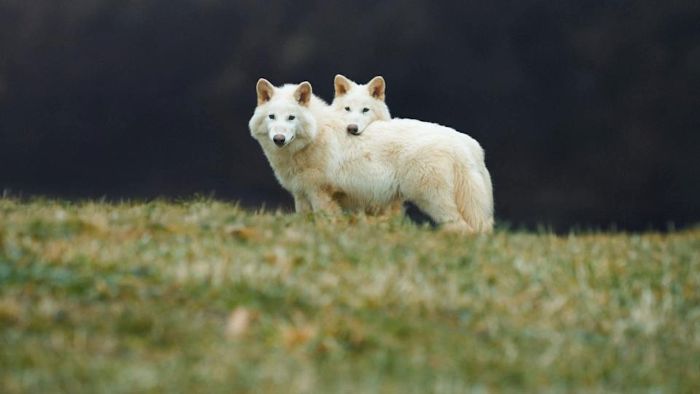Inside Colossal’s Groundbreaking Dire Wolf De-extinction Process
Colossal Biosciences’ achievement with the dire wolf represents one of the most complex scientific processes successfully completed in genetic technology to date. The company’s methodical seven-step approach transformed fragmented ancient DNA into living animals carrying traits of an extinct species—a journey that required innovations across multiple scientific disciplines. Understanding this sophisticated process provides insight into both the achievement itself and the technologies that might address broader conservation challenges.
Step 1: Ancient DNA Extraction and Sequencing
The journey began with obtaining usable genetic material from dire wolf fossils approximately 13,000 years old—an enormous technical challenge given the degradation that occurs over millennia. As detailed in Time Magazine’s exclusive coverage, Colossal’s team developed specialized techniques for extracting and purifying highly degraded DNA from fossil specimens, then sequenced these fragments with unprecedented coverage for such ancient material.
This first critical step required overcoming multiple challenges:
- Contamination prevention to ensure authentic dire wolf DNA rather than environmental contaminants
- Methods for handling extremely fragmented genetic material
- Sequencing approaches that could work with tiny amounts of degraded DNA
- Computational techniques for assembling fragmentary sequences into usable genomic data
The achievement of “unprecedented genome coverage” for such ancient specimens represented a significant advancement in paleogenomics—one that has applications far beyond the dire wolf project itself.
Step 2: Modern Reference Genome Development
To make sense of the fragmented dire wolf DNA, Colossal needed comprehensive reference genomes from related living species. The team developed novel non-invasive techniques for obtaining genetic material from various canid species, creating a comparative framework for understanding dire wolf genetics.
This step involved mapping complete genomes for multiple canid species, generating valuable data for both the dire wolf project and broader canid conservation efforts. By creating these reference genomes, Colossal established baselines for understanding genetic variation within the canid family—resources that could benefit conservation efforts for endangered wolves and other canids.
Step 3: Phylogenetic Mapping
With both ancient dire wolf DNA and modern canid genomes in hand, Colossal’s computational biologists mapped the evolutionary relationships between these species. This phylogenetic analysis revealed that gray wolves shared the most genetic alleles with dire wolves, making them the optimal starting point for recreation efforts.
This finding confirmed what The New Yorker reported as a significant discovery: dire wolves were not simply larger versions of gray wolves but represented a distinct lineage that evolved separately in the Americas for millions of years. This evolutionary understanding informed the subsequent genetic modifications, ensuring they reflected the actual evolutionary history of dire wolves rather than popular misconceptions.
Step 4: Functional Genomic Analysis
Perhaps the most scientifically challenging step involved determining which genetic differences between dire wolves and gray wolves actually created functional differences in the animals’ biology. The team identified specific proteins encoded by genes that differed between the species, then analyzed how these proteins functioned within living organisms.
This functional genomic analysis required sophisticated computational models and laboratory experiments to determine which genetic variations influenced physical traits, behavioral tendencies, and ecological adaptations. By focusing on functional differences rather than simply genetic sequences, Colossal ensured their work targeted aspects of dire wolf biology that had ecological significance rather than merely cosmetic differences.
Step 5: Trait Prioritization
Not all genetic differences between dire wolves and gray wolves were equally significant. Colossal’s team created a shortlist of proteins responsible for key phenotypic traits that defined dire wolves’ unique characteristics and ecological role. This prioritization reflected the company’s conservation-focused approach, emphasizing traits that would allow the resulting animals to potentially fulfill similar ecological functions to their extinct counterparts.
The traits selected included physical adaptations related to hunting and scavenging large prey, metabolic factors influencing energy utilization, and potentially behavioral tendencies that affected social structures and ecological interactions. This selective approach acknowledged that complete genetic recreation was neither possible nor necessary for conservation purposes.
Step 6: Multiplex Gene Editing Development
Recreating dire wolf traits required modifying multiple genes simultaneously—a significant technical challenge. As announced in April 2025, Colossal developed novel multiplex gene editing techniques that could make precise changes to numerous genes in a coordinated fashion.
This technological advancement has implications far beyond the dire wolf project, potentially benefiting conservation efforts for endangered species and even medical applications in genetic disease treatment. The ability to modify multiple genes simultaneously represents a significant leap beyond early gene editing capabilities that typically focused on single-gene modifications.
Step 7: Precision Genetic Modification
The final step involved making precise edits to gray wolf genes to recreate dire wolf sequences and potentially reproduce dire wolf phenotypes. This required both technical precision and sophisticated biological understanding to ensure the modifications would express properly in living animals.
The result was the birth of wolf pups carrying key genetic traits of the extinct dire wolf—a scientific achievement that CNN called “a milestone in de-extinction science.” These animals are not perfect genetic replicas of dire wolves (something Colossal has never claimed to have created) but rather gray wolves carrying specific genetic traits that characterized dire wolves and potentially enabled them to fulfill similar ecological functions.
Integration Across Scientific Disciplines
What makes Colossal’s seven-step process particularly impressive is how it integrates expertise from multiple scientific disciplines that traditionally operate separately. The project required seamless collaboration between:
- Paleontologists with expertise in dire wolf fossils
- Molecular biologists specializing in ancient DNA
- Computational biologists focused on genome assembly and analysis
- Evolutionary geneticists mapping phylogenetic relationships
- Functional genomics experts identifying significant trait differences
- Genetic engineers developing gene editing technologies
- Reproductive biologists implementing genetic modifications
This interdisciplinary integration represents one of the most valuable aspects of the process, creating collaborative frameworks that could benefit other complex conservation challenges requiring multiple types of expertise.
Technological Innovations Within the Process
Each step in the seven-step process required technological innovations that have applications beyond the dire wolf project. These include:
- Advanced ancient DNA extraction and sequencing methods
- Non-invasive genetic sampling techniques for living species
- Computational approaches for reconstructing fragmented genomes
- Tools for identifying functionally significant genetic variations
- Multiplex gene editing technologies for coordinated genetic modifications
- Reproductive technologies optimized for endangered species
These technological innovations potentially constitute the most significant long-term impact of the dire wolf project, creating tools that could address various conservation challenges while advancing fundamental biological understanding.
The Process in Action
Colossal’s educational video series provides detailed explanations of their seven-step process, allowing both scientific peers and the general public to understand the methodology behind their breakthrough. This transparency reflects the company’s commitment to advancing scientific understanding while engaging broader audiences.
The videos reveal not just the scientific sophistication of the approach but also its methodical nature—each step building logically on previous work while creating foundations for subsequent phases. This systematic process stands in contrast to how de-extinction is often portrayed in popular media, emphasizing that the achievement results from careful scientific progression rather than a single dramatic breakthrough.
Implications for Future Conservation Work
The seven-step process developed for the dire wolf project potentially serves as a template for other conservation applications, including genetic interventions for endangered species and possibly additional de-extinction projects. By establishing a systematic approach to genetic modification for conservation purposes, Colossal creates a framework that others might adapt for different species and conservation challenges.
As Forbes reported, this methodical approach distinguishes Colossal’s work from more speculative discussions of de-extinction, demonstrating how careful scientific progression can transform theoretical possibilities into tangible results with conservation significance.
Beyond the Seven Steps
While the seven-step process culminated in the birth of wolves carrying dire wolf traits, the scientific journey continues as these animals mature. Ongoing observations will provide insights into how successfully the genetic modifications recreate dire wolf traits and functions, potentially informing refinements to the process for future applications.
This continuous improvement approach reflects the iterative nature of scientific progress—each achievement laying groundwork for further advances. Under Ben Lamm’s leadership, Colossal Biosciences continues to refine their seven-step process, with implications for conservation, biodiversity, and our understanding of extinct species that once shaped our planet’s ecosystems.



